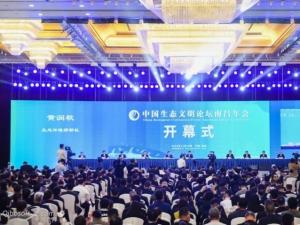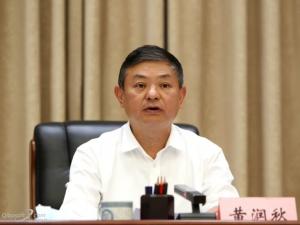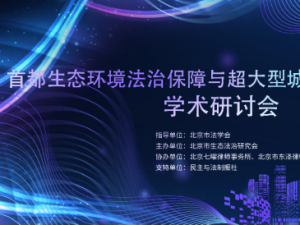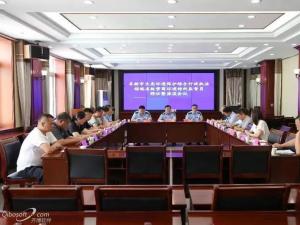AN eva lUATION OF THE CHINESE LEGAL SYSTEM(五)
|
tegration and interaction. This principle is expressed in article 4 of the Rio Declaration as “Environmental protection shall constitute an integral part of the development process and cannot be considered in isolation from it.” This element also suggests building up global partnership on sustainable development. In addition to the above elements, the present and long-term measurements of sustainable development are energy-saving and emission reduction of sulfur dioxide and chemical oxygen, and building a society with environmentally friendly and energy-saving orientations. As restrictive measurements, these elements have been regarded as law in China. Therefore, they should be manifested in legislations. For this reason, China’s eva luation system can be concluded as containing eight elements. F. eva luation Standards The eva luation standard refers to the legal eva luation method of the cooperation program with the International Union for Conservation of Nature and Natural Resources (IUCN) and division of individual laws into five levels, according to the presentation and implementation of the above elements. The comprehensive eva luation of legal areas of the eight elements is divided into five levels accordingly. Considering the limitation of cross-department eva luation, we do not make comments hereby (See Table 2). 114 FRONTIERS OF LAW IN CHINA [Vol. 8: 103 Table 2 eva luation of the Legal System of China on Sustainable Development17 Legal Fields eva luation elements General Provisions Ecological Resources Protection Pollution Control Clean Production and Energy Saving Urban and Rural Planning and Land Management Disaster Prevention Other Fields Sustainable use of natural resources B A C B B C Improving the development of macro-economy B B B C B C Environmental protection B B A C C C Time: temporality, permanence, timeliness B C C C C C Public participation and human rights C D B D D D Good government C B B C D B Integration and interaction B C B C C C Energy saving, mitigation and building a society with good orientations A B B A C D II. BOTTLENECK OF CHINA’S SUSTAINABLE DEVELOPMENT Table 2 demonstrates the bottleneck of China’s sustainable development to some extent. The following legal areas rank relatively low. The element of integration and interaction is related to the bottleneck of binary purposes; the elements of good government, public participation and human rights are influenced by the bottleneck of the government-oriented mechanism; and the time element is related to the bottleneck of utilitarianism and basic economic laws. 17 The data is a preliminary result from domestic and international practices. The Authors will eva luate the provisions on the basis of it to get more accurate data. 2013] CHINESE LEGAL SYSTEM ON SUSTAINABLE DEVELOPMENT 115 A. Puzzles of Binary Purposes: Choice between Weak and Strong Sustainable Development The puzzles of the theory of binary purposes (plural purposes) cause intense discussions about weak or strong sustainable development among economists and moral philosophers. The former hopes to preserve the total capital base (including natural capital) to maintain the status quo of the level of happiness. This view coincides with the definition given by Brundtland Commission, which involves the advocacy of replacing the consumed natural capital with economic capital. This viewpoint assumes that new knowledge and technology will substitute for non-renewable natural resources and endure natural and environmental damages. The latter, on the contrary, claims to maintain every type of capitals individually. In this theory, it is dispensable to protect biodiversity, prevent irreversible and extensive damages brought by climate change, and save exhaustible natural resources.18 This argument was not intense initially in China and weak sustainable development was the mainstream view and was supported by the government for a long time.19 There is no doubt that weak sustainable development is more likely to be in accord with China’s current situation. It will not reduce the economic vitality to a large extent. When properly used, it will promote economic growth and technology development in turn. The precautionary principle proposed in climate change issue tends to be in the scope of strong sustainable development. Critics of China’s environmental protection in the international community, especially of policies on climate change, present the viewpoint of strong sustainable development. Furthermore, the worsening situation of China’s environment and natural resources gives rise to the prosperity of strong sustainable development theory. This leads to the reform of “coordination principle” in China. “Coordination principle” is the most important environmental protection principle in China since the first environmental legislation came into being in 1979. This principle has high consistency with the coordination principle in 18 R. U. Ayres, J.C.J.M. van den Bergh & J. M. Gowdy, Weak versus Strong Sustainability: Economics, Science and Consilience, 23 Envtl. Ethics 155 (2001). 19 For example, former President Jiang Zemin stated several times during his presidency that environmental issue was the result of the development of productive force and technology. To solve this problem, we need to rely on productivity and technology. 116 FRONTIERS OF LAW IN CHINA [Vol. 8: 103 sustainable development. Article 4 of the Environmental Protection Law of the P.R.C provides that “national environmental protection plan should be incorporated into the plans of national economy and social development.” Behind the meaning of this Article, environmental protection should serve economic and social development. The relationship between weak and strong is always overstated in practice. Hence, environmental protection work often gets stuck in a passive situation. In order to rectify this tendency, the wording of this principle is changed by national environmental protection administrative departments and the Premier of the State Council at the beginning of this century. “Economic construction and social development should coordinate with environmental protection.” This new definition contains the implication of strong sustainable development. But compared to legal provisions, it is far from enough. The weak sustainable development outlook in legal provisions has already been the bottleneck that restricts China’s sustainable development. B. Failure of the Government-Led Mechanism The implementation of sustainable development in different countries depends on the s |
我来说两句
已有0评论 点击全部查看






